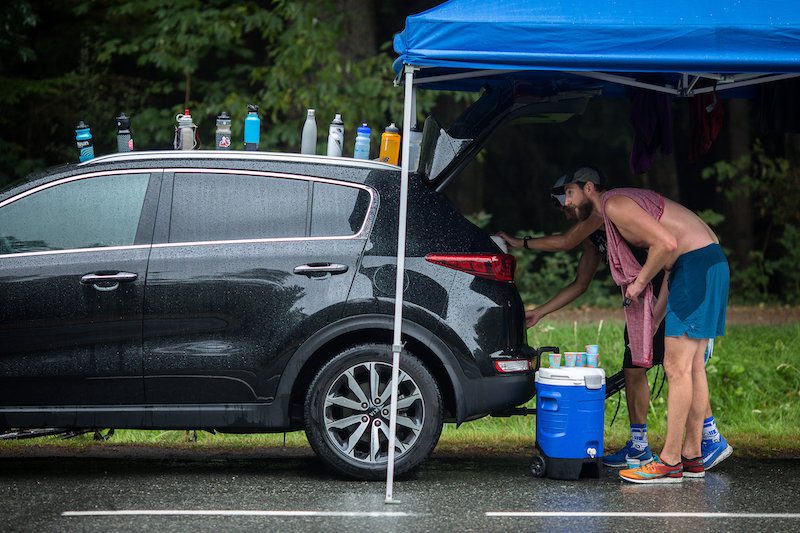
Marathon Fuelling: Practice Makes Perfect
During a marathon build, we can get so focused on hitting the miles, nailing the workouts and perfecting our recovery routines, that we forget the crucial piece of nailing down our marathon fuelling plan.
Science tells us that no one can get through 2 hrs+ of running without their muscles becoming depleted, and for them to continue to work, we need some kind of fuel. Nike’s famous Breaking2 project put the spotlight on the importance of fuelling, with scientists and athletes heavily invested in finding the perfect fuel and strategies to break the 2-hour barrier.
Building a fuelling plan
The early weeks of your marathon build provide the perfect opportunity to build a fuelling plan. This means considering what you’re going to use for fuel, how much of it you’re going to take and when you’re going to take it.
Start with research
Find out what products will be available at your goal race and decide if you want to use that fuel, carry your own, or some combination of the two.
How to pick the right fuel for your marathon training and racing?
The most common forms of fuel are gels and sports drinks. At the end of the day, all these products are just different combinations of sugars that convert to carbohydrate (CHO). CHO is what your muscles crave and need to keep you going on race day.
Picking your fuel is an extremely individual choice. What works for your training partner might not work for you, so try out a bunch of different products during training to find what you like the taste of and what agrees most with your stomach. Practice taking fuel on your long runs or long tempos, since these best simulate the blood flow through your gut will experience on race day.
We suggest trying the fuelling products (gels and sports drinks) that are available on your race course first, and going from there. If the fuel available at the race doesn’t work for you, try something else that you will carry in the form of gels or blocks and gummies. Though sports drinks can be a great option, they are harder to carry than gels, so unless you’re getting bottles handed to you every 5km, stick to your own fuel or the aid stations.
How much should you be taking in?
We cannot stress enough how important it is to practice the amount you need to take in.
We suggest some minimums that you should aim for, based on the grams of carbohydrate in your fuel. This information can be found on the packaging for most products. Focus on consuming at least 30 grams of CHO per hour. Most gels have between 20-25 grams of CHO in them, but you’re unlikely to suck out every gram of gel as you frantically stuff it in your face mid-race.
Rule of thumb: subtract 5 grams the number of carbs in your gel and you have what you’re actually getting in. To hit 30 grams, you need to be taking down, at minimum, roughly 1 and 1/3rd gel per hour, or 1 gel every 40 minutes.
If you’re using a sports drink instead, you can change up the concentration of the drink to get in more CHO. Instead of adding the standard 1 scoop of powdered drink, add 1.5 scoops. See where that lands you.
What’s the maximum? It’s when your GI system shuts down, which you’ll only find out by practicing fuelling. Be sensible here – you don’t want to completely ruin a training run by trying to take down 200 grams of CHO per hour. Most athletes can handle between 60-80 grams of carbs per hour.
When to take in that fuel?
Early and often.
Start by taking fuel 5-10 minutes before the race, and then take on fuel at consistent intervals throughout. We suggest every 20-30 minutes of running, taking roughly the same amount of fuel each time.
A common mistake in fuelling is that people often wait to start sucking back gels until they feel like they need it. If you wait, it’s going to be too late, as all of these forms of fuel are going to take a while to kick in and deliver the energy you need.
Gels are usually taken with water, something that you should also be practicing on your long and tempo runs whenever possible. Unlike fuel, hydration is much more dependent on race day conditions. Hydrating properly is a strategy in itself, so we’ll save this topic for another time. For now, make sure you’re washing down those yummy gels with some water.
 Dylan Wykes
Dylan Wykes